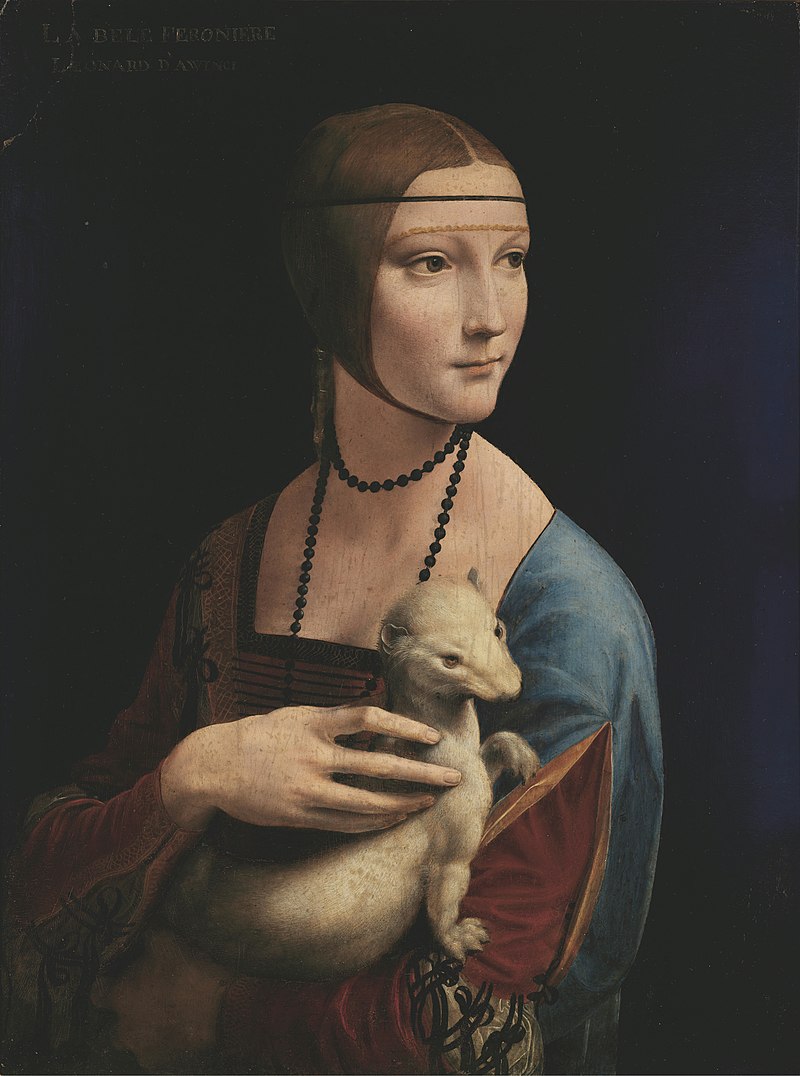
Unveiling the Enigmatic Beauty of “Lady with an Ermine”
“Lady with an Ermine,” an enigmatic masterpiece by Leonardo da Vinci, is a mesmerizing portrait that captures the essence of Renaissance art. Painted around 1489-1490, this artwork showcases Leonardo’s exceptional skill in portraiture and his keen eye for detail. In this article, we will delve into the painting’s meaning, net worth, location, significance, and the captivating story of the lady behind the ermine.
- The Meaning of “Lady with an Ermine”:
The “Lady with an Ermine” portrays Cecilia Gallerani, a young woman and mistress of Ludovico Sforza, the Duke of Milan. The lady is elegantly dressed in a sumptuous gown, exuding grace and beauty. She gently cradles an ermine, a small, white mammal with a distinctive black-tipped tail.
The ermine’s inclusion in the portrait is symbolic and open to interpretation. In Renaissance art, the ermine represented purity and virtue, and its presence beside Cecilia Gallerani emphasized her esteemed status as a woman of grace and chastity.
- The Net Worth of “Lady with an Ermine”:
As one of Leonardo da Vinci’s most famous paintings, “Lady with an Ermine” holds immense artistic and cultural value. However, it is impossible to determine an exact net worth for the artwork, as it is not for sale. The painting is housed in the Czartoryski Museum in Krakow, Poland, and is considered a national treasure, making it irreplaceable and not available on the art market.
- Where and When “Lady with an Ermine” Was Painted:
Leonardo da Vinci painted “Lady with an Ermine” during his time in Milan, Italy, between 1489 and 1490. The artwork is an exquisite example of the artist’s mastery in capturing the human form, utilizing his signature sfumato technique to create soft, seamless transitions between light and shadow.
- Why “Lady with an Ermine” is Significant:
“Lady with an Ermine” is significant for several reasons. First, it exemplifies Leonardo da Vinci’s extraordinary ability to infuse his portraits with emotion and psychological depth. The lady’s captivating gaze and subtle smile convey a sense of inner contemplation and sensitivity.
Second, the painting represents a pivotal moment in Renaissance art, as Leonardo moved away from the stiff and formal portraits of the past, opting for a more intimate and lifelike representation of his subjects.
Furthermore, “Lady with an Ermine” is one of the few known portraits of Cecilia Gallerani, making it a rare glimpse into the life of a Renaissance-era noblewoman. The artwork’s historical value extends beyond its artistic merit, shedding light on the social and cultural milieu of the time.
- The Artist Behind “Lady with an Ermine”:
Leonardo da Vinci, a polymath and one of the greatest artists in history, is the genius behind “Lady with an Ermine.” Apart from his artistic prowess, Leonardo was a scientist, inventor, and philosopher, epitomizing the quintessential Renaissance man. His unique approach to art, combining technical precision with an acute understanding of human anatomy and expression, revolutionized the field of portraiture.
“Lady with an Ermine” remains an exquisite testament to Leonardo da Vinci’s artistic genius and his ability to capture the complexities of human emotion. As a priceless national treasure, the painting embodies the elegance and grace of Renaissance art, leaving a lasting impression on viewers worldwide. Cecilia Gallerani’s enigmatic smile and the tender portrayal of the ermine continue to fascinate art enthusiasts and scholars alike, cementing “Lady with an Ermine” as an enduring masterpiece in the pantheon of art history.





